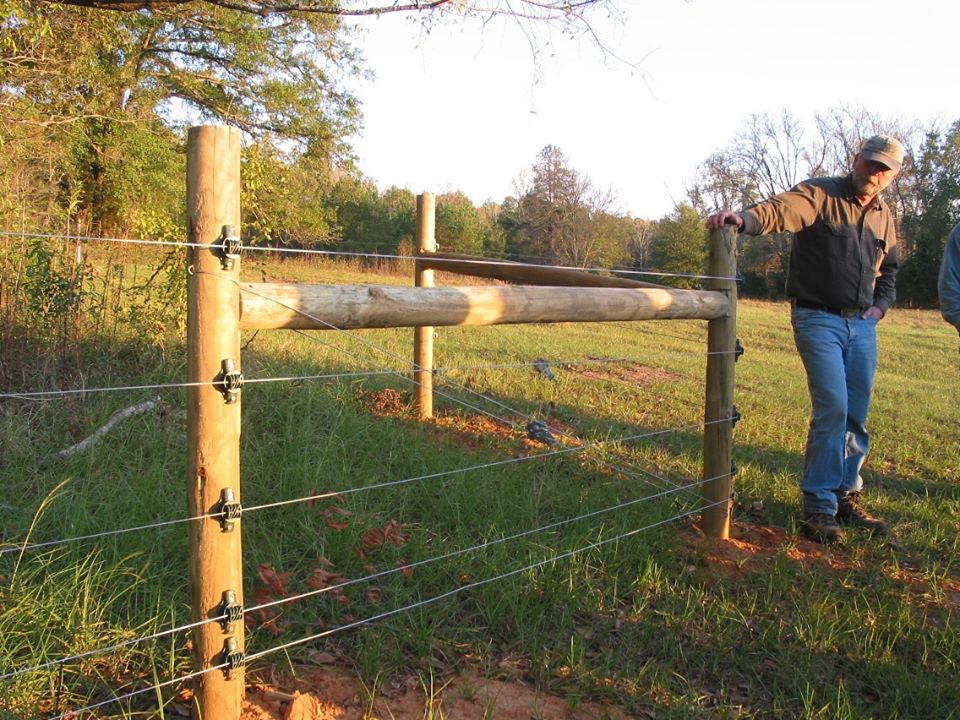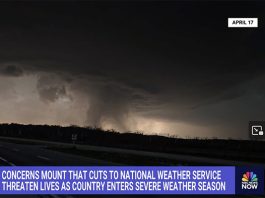Ok – so you don’t have kangaroo or elk problems. Read this anyway. You’ll find some excellent examples of how folks fence to solve all kinds of problems and I think you’ll find things you can use. Plus, how often do you get to hear from a fencing expert on the costs and effectiveness of different kinds of fencing? Enjoy!
When my wife Dawn and I visited Australia earlier this year, one of the interesting aspects of grazing in Down Under was how some graziers are dealing with the burgeoning kangaroo population in rural areas. Contrary to what many of the coastal dwelling urban Aussies believe, kangaroos are not an endangered species. Due to livestock water development projects throughout the ‘bush’, there are more kangaroos on the landscape today then there ever have been historically. Kangaroos are one of the national symbols of Australia and while many people are big fans of ‘Skippy’ as the ‘roos are universally called, many graziers find them to be an expensive pest.
‘Roos are relatively small animals compared with elk in the American West, but they have big appetites. A mob of ‘roos can strip the landscape especially in drought situations leaving livestock with little to eat and creating much land degradation. Some graziers install kangaroo exclusion fences to protect their grazinglands from overuse by the ‘roos. It is an expensive proposition but the payback can be significant.

‘Roos are especially problematic during droughts when they can come and eat off pasture regrowth and completely negate the benefits of planned recovery periods. Some graziers have started installing expensive ‘roo exclusion fences to protect their properties. Here are several unhappy ‘roos wondering what just happened to the neighborhood.

Here is an illustration of what can happen when ‘roos are excluded from the property.This fence was installed one year ago. The right side of the fence is still occupied by ‘roos while the left side is protected from ‘roo grazing during planned recovery periods. The difference is 100+ AUD/acre grazing on the left side while only 20-30 AUD/A on the unprotected pastureland. Note the purple-flowered weed encroachment where overgrazing by the ‘roos goes on continuously.

Building fence to exclude ‘roos is an expensive proposition and you do want the fence to be as effective as possible. Here are some examples of how graziers are solving fencing challenges.
This fence material is 8-ft tall fixed-knot woven-wire. Although it is 8-ft wire, the fence is only 6 to 6 1/2-ft tall as 18-24″ of wire is folded out to make the ground skirt to discourage digging under the fence. If we were doing an exclusion fence for elk, the full height of the woven-wire would be vertical to give us at least 8-ft barrier.

Here is a close up view of the mesh flattened out to make the ground barrier. The fold is on the inside of the exclosure. We do have a concern about the longevity of the wire being reduced by being in direct ground contact over time. This will be come more problematic as vegetation reestablishes itself on the inside of the exclusion fence. It is important to use a class-3 hi-tensile woven wire to improve longevity.

The woven-wire is secured to the line posts with wire wraps. Typically this is done with a softer, larger gauge wire than the usual 12.5 ga hi-tensile.

Because much of Australia is prone to flash-flooding, most of these fences had additional perpendicular bracing on the downhill side to resist debris-laden water flow. The fence in this picture is new construction, but you can already begin to see debris build up at the base of the wire. This was one of my greatest concerns regarding viability of this type of fence on this landscape.

Note the angle-iron hinges attached to the posts on either side of this swale. This allows the fence to lift as water flow increases with flooding. Also note the woven-wire skirt in the low area is 6-ft rather than just 18-20″. The logs or poles are there to keep the skirt weighted down against feral critters burrowing under the skirt. The fence obviously requires some maintenance after each high water event.

A cable (1/4″ or 3/8″??) was run through these welded chain links at the top of every post to provide added support for the weight of the wire. We presume that allowed a little wider post spacing.

Exclusion Fence Costs and Effectiveness
We have been looking at the benefit of exclusion fencing when it comes to dealing with kangaroos in Australia. The idea of building a fence formidable enough to exclude feral grazers such as roos in Oz or elk in the US is intimidating to many ranchers due to the lump sum cost of such an endeavor.
When it comes to ranching, we at AGLS rarely think in terms of the lump sum cost of any tool or practice for grazing management. Since ranching is a land-based business, we always look at those costs on a per acre business.
This table takes the perimeter fence requirements of different acreages and shows the cost on a per acre basis. The acreages shown are as typical configuration of that land unit within the rectangular survey system.
Note that as the acreage increases in size, the number of feet of fence per acre enclosed goes steadily down. This is a simple geometrical relationship. Because not every land parcel is perfectly square, we cannot simply use a universal mathematical formula to calculate the perimeter:area ratio.
If we then look at the cost per foot of perimeter fence, we can estimate the fence cost per acre. Here are some examples. Remember, there is not a simple universal formula for calculating the perimeter-area ratio for properties, especially when it comes to odd shaped parcels. The generality is as land parcel size increases, the distance of fence required to enclose each acre of the parcel decreases. As cost per foot of installed fence goes up, cost per acre goes up for any given sized parcel.
Note that an 80-acre parcel surrounded by a $2/ft fence has the same per acre cost as 1280-acre parcel surrounded by an $8/ft fence. Which farm would be more likely to afford spending $198/acre for a fence? The larger property, of course, because of a greater total revenue flow.

This fence has an installed cost/ft of less than $1. As a perimeter fence it would contain most cattle, but it would probably not hold sheep or goats and predators or feral grazers will easily cross it.

The classic 5-strand barb-wire fence has an installed cost of $2-3/ft depending on your neighborhood. It will contain almost all cattle, but sheep and goats will still slip through especially if they get hungry. Feral grazers will routinely pass over, under, or through this fence and very often tear it up in the process. Predators easily pass this fence.

This electrified 5-wire hi-tensile fence has an installed cost around $2/ft. It will contain almost all cattle and most sheep or goats. Most feral grazers will still jump over it once they understand the concept. Some predators are deterred by this fence while some are not. Add 3 more high tensile strands and make it either bi-polar or hot-ground fence and it will be 99% effective for livestock containment and it will deter most predators. Larger feral grazers will still jump it.

This is fully electrified hi-tensile fixed-knot woven wire with a high tensile barb at ground level, 2 high tensile hot wires and a ground wire above the woven-wire. Installed cost is around $3-4/ft. This fence is near 100% effective for all livestock containment and deters most predators. Feral graziers are more hesitant to cross this fence, but deer and elk will both jump or attempt to jump this fence.

We are back to the Australian ‘roo fence where we started this conversation. The woven-wire part of the fence is 6 feet tall with two barb wires strung above that for a total height near 7 feet. After going through meter to feet conversion and currency exchange, the installed cost of this fence was about $6/ft. This fence is essentially 100% effective for all livestock containment. It would be a deterrent for all large predators and exclude almost all feral grazers. An occasional elk might jump this fence but pretty unlikely.

This was the first elk exclusion fence I saw installed around an entire ranch in the American West. It is 7 1/2 ft tall with a non-electrified 48″ woven wire on the bottom and two hot HT wire & a ground wire above. Installed cost for this fence today would be around $6/ft. This fence is 100% effective for all livestock containment except the occasional goat that would slip out around the gates. All large predators and feral grazers are excluded from the property.

Now we know the costs and the effectiveness of fencing. The next question is “Is the cost of the fence less than the what we gain by having the fence?” We’ll look at that in next week’s issue.
Spend 30 Minutes With Jim Gerrish!
 Jim is putting on a series of grazing webinars with Foothills Forage Association and Maia Grazing. On Wednesday, May 27, 2020, Jim will be talking about how to design a planned grazing system and covering:
Jim is putting on a series of grazing webinars with Foothills Forage Association and Maia Grazing. On Wednesday, May 27, 2020, Jim will be talking about how to design a planned grazing system and covering:
• Making a smart evaluation of your existing resources
• Key role of stock water development
• Enriching grazing data with defined units of record
• Understanding of how to leverage MaiaGrazing to support paddock design
Click here for more information and to register for the webinar.





Thank you for this useful information.
My brother hunts in Namibia where they raise lots of sheep and do outfitting for hunters of wild critters. They control predators (kill them all, as I understand it) and have some sort of perimeter fence along a border. They do not, however, exclude wild herbivores, but make them part of their operation’s income.
This is not an ad for that style of land usage or that type of hunting or farming/outfitting, but excluding everything that might negatively affect farming doesn’t seem right, either.
All those caveats aside, thank you again for this article.
Why does the skirt goes on the interior of the fence, when presumably the diggers would be digging in from the outside? And instead of log or rock weights, do they ever use long rebar “staples” or other mechanical methods? Thanks Jim!
P.S.: Typo in 2nd paragraph: “on of the” instead of “one of the”. Sorry–spent my Uni. money on English instead of regenerative fodder systems; finally came to my senses and am catching up!
Thanks for the typo note. I fixed it! 🙂
Hi Peter, That is a good question. No one ever said why, but all the fences I saw had the skirt on the inside. Maybe the perceived digging psychology is if it is on the outside, the digger would just start digging at the outer edge of the skirt, but if an animal thinks it has dug under the vertical part of the fence and is coming up and encounters the skirt, maybe it is supposed to think, ‘The way is barred! I must turn back.’
Both of those are pretty silly notions.
I really don’t know why the skirt is to the inside. Maybe one of our Australian readers could enlighten us.
Re the use of rebar stables versus weights to hold the skirt in place, I never saw any skirts stapled down but I am sure it is plausible in some soils.
Jim G
Comments are closed.